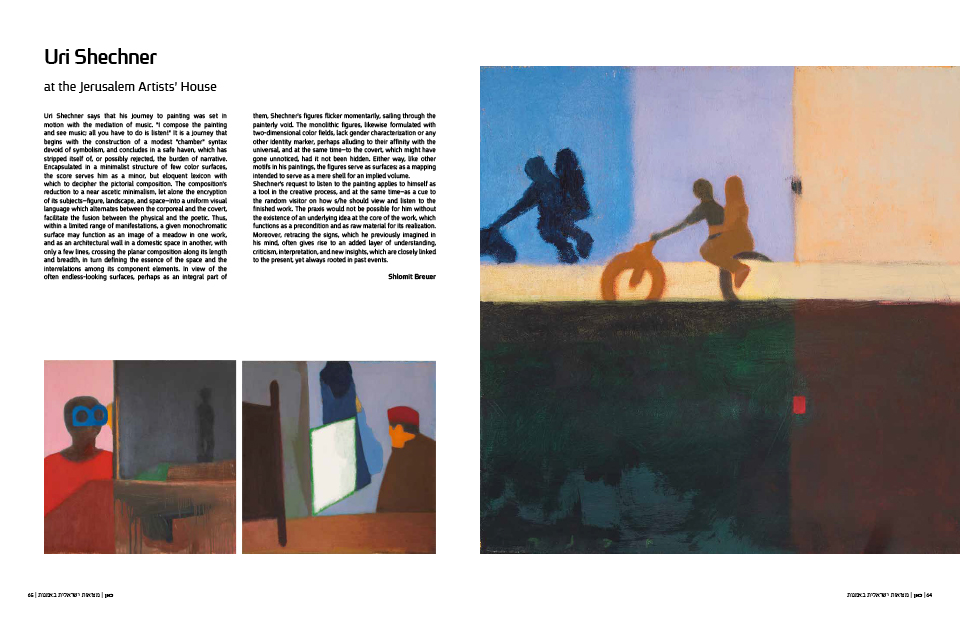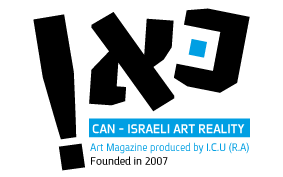Uri Shechner says that his journey to painting was set in motion with the mediation of music. "I compose the painting and see music; all you have to do is listen!" It is a journey that begins with the construction of a modest "chamber" syntax devoid of symbolism, and concludes in a safe haven, which has stripped itself of, or possibly rejected, the burden of narrative. Encapsulated in a minimalist structure of few color surfaces, the score serves him as a minor, but eloquent lexicon with which to decipher the pictorial composition. The composition's reduction to a near ascetic minimalism, let alone the encryption of its subjects—figure, landscape, and space—into a uniform visual language which alternates between the corporeal and the covert, facilitate the fusion between the physical and the poetic. Thus, within a limited range of manifestations, a given monochromatic surface may function as an image of a meadow in one work, and as an architectural wall in a domestic space in another, with only a few lines, crossing the planar composition along its length and breadth, in turn defining the essence of the space and the interrelations among its component elements. In view of the often endless-looking surfaces, perhaps as an integral part of them, Shechner's figures flicker momentarily, sailing through the painterly void. The monolithic figures, likewise formulated with two-dimensional color fields, lack gender characterization or any other identity marker, perhaps alluding to their affinity with the universal, and at the same time—to the covert, which might have gone unnoticed, had it not been hidden. Either way, like other motifs in his paintings, the figures serve as surfaces; as a mapping intended to serve as a mere shell for an implied volume.
Shechner's request to listen to the painting applies to himself as a tool in the creative process, and at the same time—as a cue to the random visitor on how s/he should view and listen to the finished work. The praxis would not be possible for him without the existence of an underlying idea at the core of the work, which functions as a precondition and as raw material for its realization. Moreover, retracing the signs, which he previously imagined in his mind, often gives rise to an added layer of understanding, criticism, interpretation, and new insights, which are closely linked to the present, yet always rooted in past events.
Shlomit Breuer Read more

|






